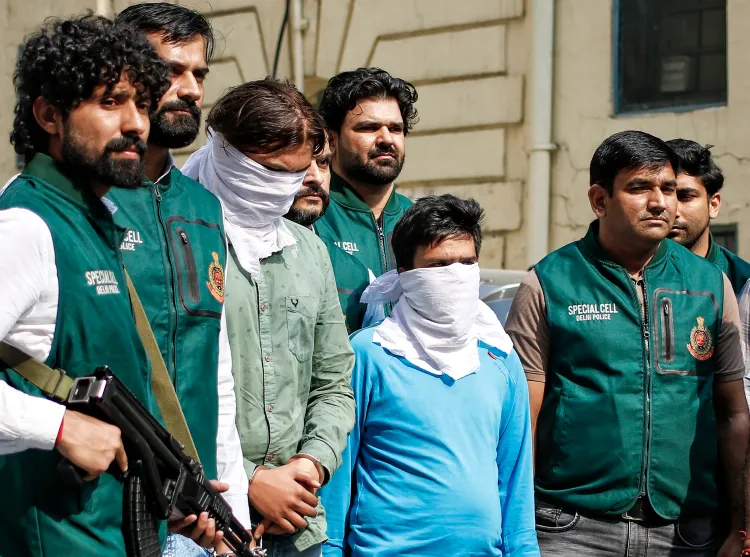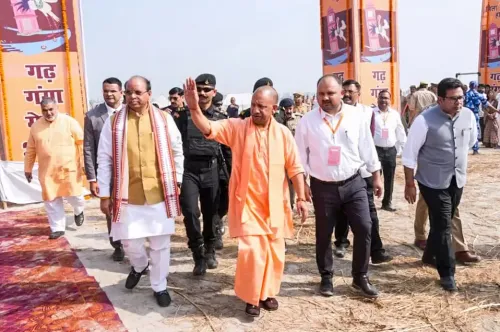Is the Islamic State Targeting Indian Youth with Digital Manipulation?

Synopsis
Key Takeaways
- Islamic State's online radicalization efforts are increasingly sophisticated.
- AI and human involvement are both used in propaganda dissemination.
- The group has executed more attacks this year compared to previous years.
- Honey trapping is a method used to recruit vulnerable youth.
- Increased funding from sympathizers supports these operations.
New Delhi, Oct 25 (NationPress) The apprehension of Md Adnan Khan, known as Abu Muharib (19), from Sadiq Nagar in Delhi, alongside Adnan Khan, referred to as Abu Mohammad (20), from Bhopal, in an Islamic State-related investigation highlights the alarming activity of the group's online radicalization efforts.
The Islamic State has a more formidable online presence compared to its diminished physical capabilities, employing various tactics to influence potential recruits.
Ongoing investigations into the Delhi arrests have uncovered that both individuals were radicalized through online platforms and were in contact with a handler based in Syria.
This connection to a Syrian handler signifies the organization's resurgence in India.
Despite suffering defeats in Syria, the Islamic State has made a significant comeback.
With 115 attacks reported this year compared to 72 last year, the group’s resurgence is evident.
Officials from the Intelligence Bureau assert that operations targeting India are orchestrated from Syria.
A structured system was established by Shafi Armar, who was eliminated in a military operation a few years ago.
Currently, his wife, Rabiya Armar, oversees the module.
After her husband’s demise, she was relocated to the Al-Hawl camp in Syria. Investigations indicate that the Islamic State is utilizing both Artificial Intelligence-driven and traditional radicalization strategies online.
The AI-driven modules are designed to disseminate propaganda in multiple languages.
Meanwhile, the traditional methods involve direct human engagement in spreading propaganda.
Additionally, a honey trapping module, entirely managed by Rabiya, has successfully lured several Indian youths.
Investigations reveal that these young individuals are enticed, subsequently radicalized, and instructed to serve the organization.
Indian authorities have observed a substantial influx of funds from benefactors and sympathizers, which are being funneled into these operations.
The module under Rabiya focuses solely on Indian activities. Some operatives are directed to execute attacks, while others engage in radicalization and recruitment initiatives.
The recent uptick in the Islamic State's operations poses a significant challenge for security agencies. Their approach has shifted dramatically, heavily relying on online methods, complicating efforts to track their activities.
A concerning trend that has emerged is that some of the youth who fall victim to honey trapping are instructed to transfer funds to the organization. These funds have been sent to various bank accounts, intended to finance terror operations.
According to officials, the Islamic State represents the most formidable threat due to its operational methodology. Its strategy in India involves capturing the minds of impressionable youth.
The widespread dissemination of their ideology is perilous as it can instigate societal changes. Initially focused on radicalization, over time, they may attempt to orchestrate major attacks, officials warn.
Another concern is the potential emergence of lone wolf attackers, a category of terrorists challenging to monitor.
Security personnel are also closely tracking the activities of the Islamic State Khorasan Province (ISKP), which operates from Afghanistan and Pakistan.
Given Pakistan's collaboration with ISKP to confront the Tehreek-e-Taliban Pakistan (TTP), there is heightened apprehension that Pakistan could leverage this group to execute strikes in India.
ISKP has long harbored ambitions in India, and this newfound alliance may provide the impetus it needs.









